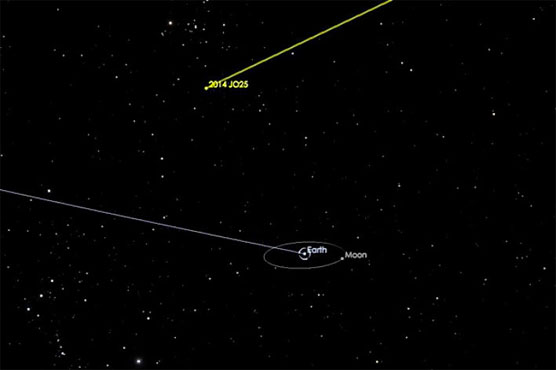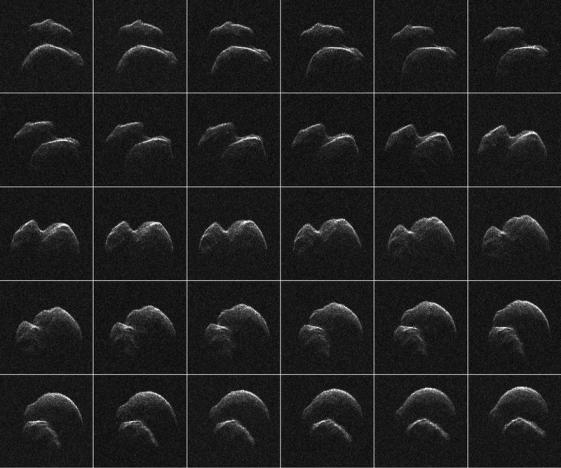Large asteroid flies safely past Earth

The approach of J025 was the asteroid's closest for at least the next 500 years.
WASHINGTON (Daily Dunya) – A large asteroid soared narrowly passed the Earth on Wednesday and is being termed as the closest approach by such an object in more than a decade by NASA.
“We’re safe. From this one,” said NASA’s planetary defense officer, Lindley Johnson.
Smaller asteroids routinely make closer passes to Earth, but 2014 J025, discovered in May 2014, was the largest asteroid to come this near to the planet since 2004, flying by at only about 4.6 times the distance from the Earth to the Moon, 1.1 million miles (1.8 million km).
The video was made by a telescope installed in the Canary Island of Spain. The asteroid is estimated to be between one-quarter and three-quarters of a mile (600-1,400 meters) wide and twice as reflective as the Moon, was not visible to the naked eye, but sky watchers should be able to view it with home telescopes for one or two nights starting on Wednesday.
 Thirty images of asteroid 2014 JO25 which was generated with radar data collected using NASA’s Goldstone Solar System Radar in California’s Mojave Desert, in a composite image released April 18, 2017. NASA/JPL-Caltech/GSSR via REUTERS
Thirty images of asteroid 2014 JO25 which was generated with radar data collected using NASA’s Goldstone Solar System Radar in California’s Mojave Desert, in a composite image released April 18, 2017. NASA/JPL-Caltech/GSSR via REUTERS
The approach of J025 was the asteroid’s closest for at least the next 500 years.
In 2004, the 3.1-mile (5-km) wide asteroid Toutatis passed about four lunar distances, or just under a million miles (1.6 million km) from Earth.
"We know the time that the object is going to be closest within seconds, and the distance is known within hundreds of kilometers (miles)," Davide Farnocchia, a mathematician at NASA’s Near-Earth Object program, said earlier.
Having several years of data on the asteroid’s trajectory gives scientists the ability to predict its path very confidently, he added.
Amateur astronomers may be watching J025’s journey, but Farnocchia said he and his colleagues have moved on to tracking even closer encounters, such as asteroid 1999 AN10, a half-mile (800-meter) wide rock predicted to pass only 236,000 miles (380,000 km) from Earth, or slightly less than the distance to the Moon, in 2027.
--- with inputs from Reuters.



